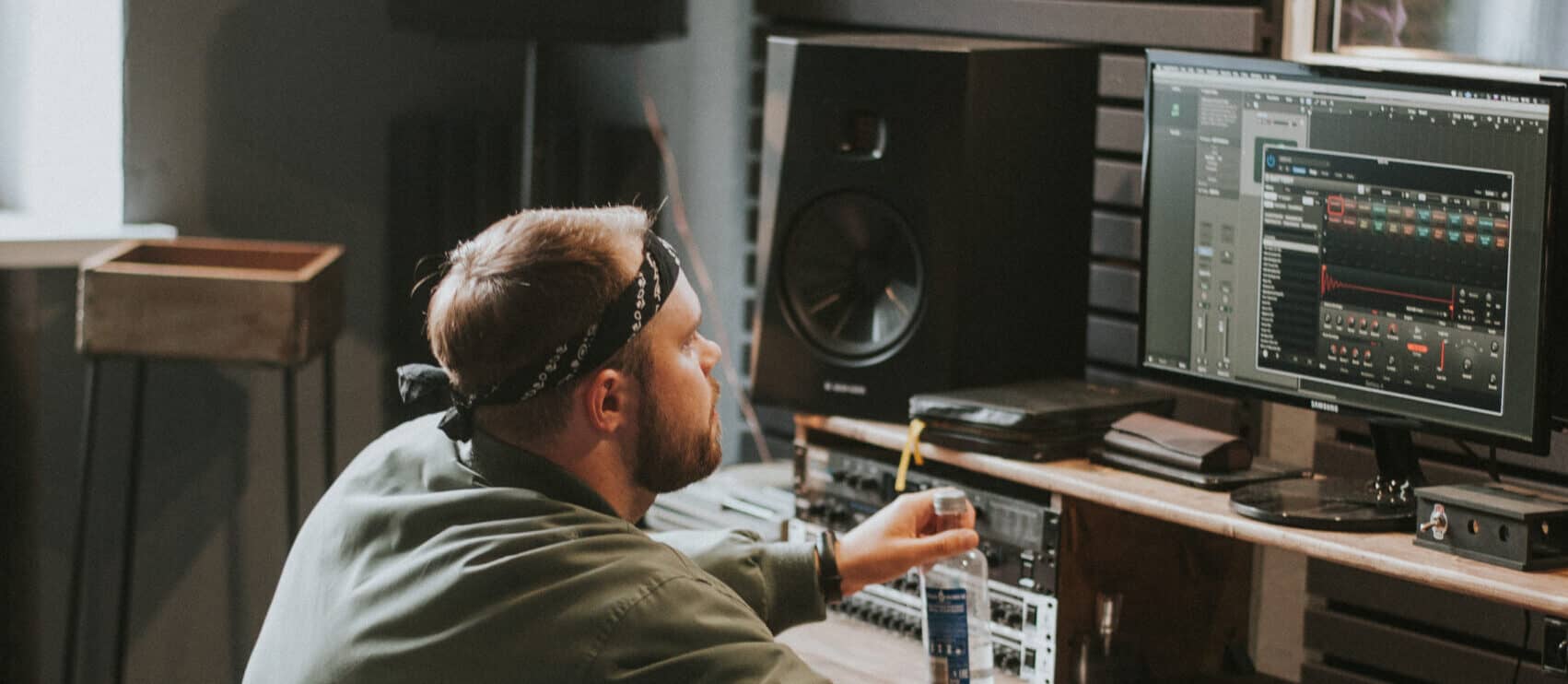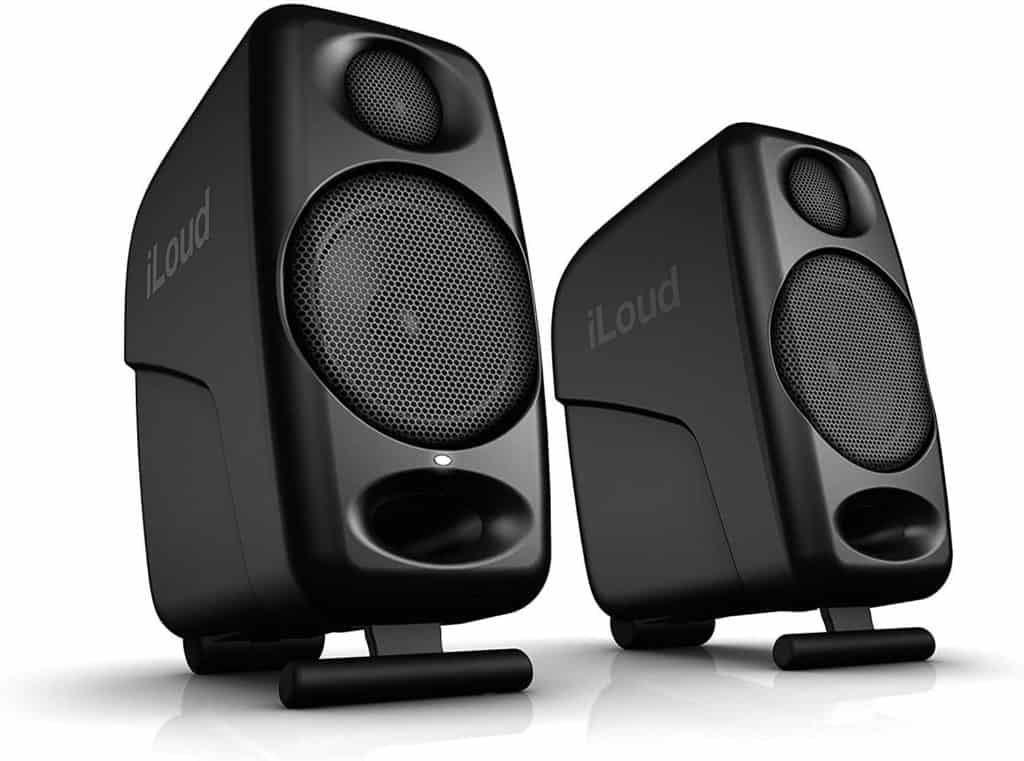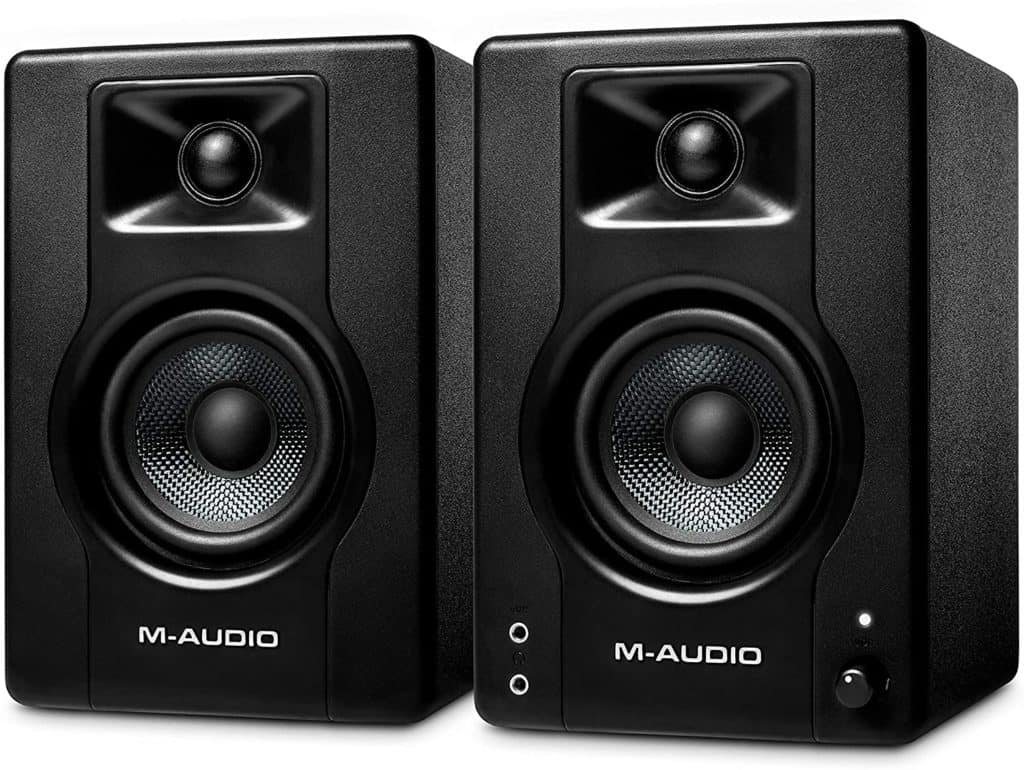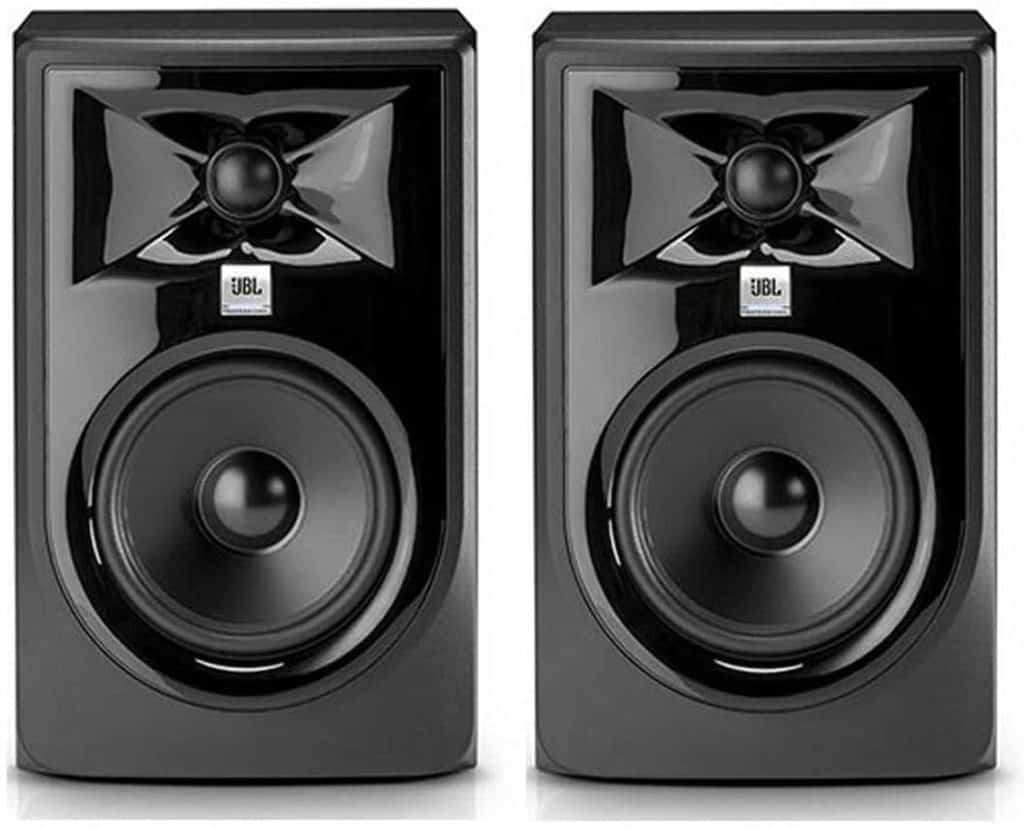
Studio monitors are some of the most important pieces of gear in any home studio. A good pair will help producers and composers accurately reproduce sound and make better mixing decisions.
But with so many different models on the market, it can be tough to know where to start.
In this guide, we’ll recommend some of the best studio monitors for different budgets and needs. Whether you’re just starting out or are a seasoned pro, we’ve got you covered.
Let’s dive in!
Note: some of these links are affiliate links. Should you choose to purchase the products via these links, Composer Code will receive a small commission at no extra cost to you.
Best Beginner Studio Monitors
($0 - $500)
If you’re just starting out in music production, you don’t need to spend a lot of money on studio monitors. In fact, many entry-level models will do the job just fine. Here are our top picks for beginner producers:
PreSonus Eris 3.5s Studio Monitors
The best budget studio monitors for beginners are the PreSonus Eris E3.5-3.5″ Near Field Studio Monitors. It’s nothing short of unbelievable to get a pair of 3.5-inch woofers, all the outputs you could ever need, crispy sound quality, and the Studio One DAW for under $100.
Plus, PreSonus is very generous with bundling all the cables you’ll need in this package, unlike some other folks on this list (*cough* KRK *cough*).
The fact that you’ll have just about everything you’ll need to start making music (including a slew of really, really nice plugins) for under $100 make these the best budget studio monitors for beginners, hands down.
The best part is that even if your budget grows, these little beauties will still have a place in your studio as great near-fields thanks to their compact form factor.
If you’re looking to jump into the world of studio monitors on a tight budget, look no further.
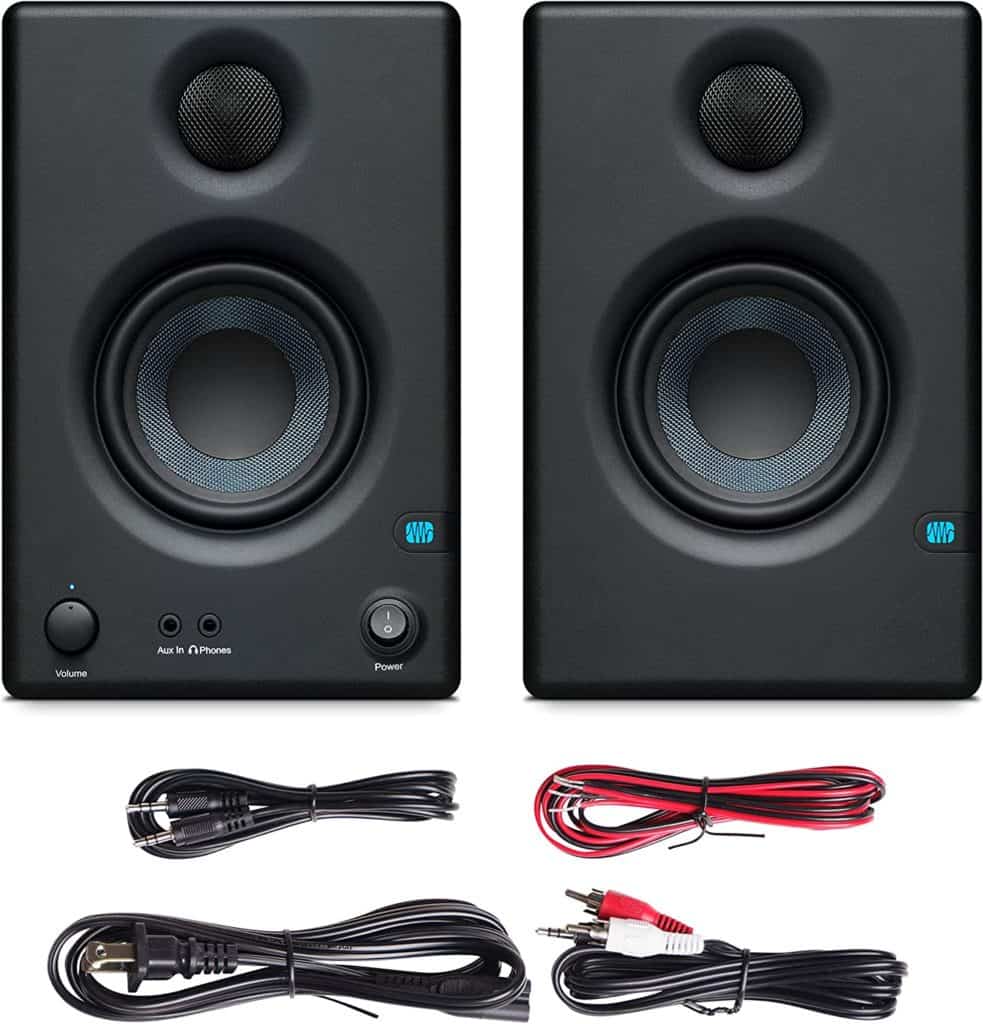
Specifications:
Frequency Response:
80 Hz – 20 kHz
Amplifier:
50W (25W per speaker)
Low-Frequency Driver:
3.5″ woofer
High-Frequency Driver:
1” silk dome tweeter
Inputs:
- Stereo 1/8″ (2)
- Balanced ¼” TRS (2)
- Unbalanced RCA (2)
Outputs:
Controls:
- Volume
- MF Control
- HF Control
What comes in the box:
- PreSonus Eris E3.5 3.5″ 2-Way 25W Nearfield Monitors (Pair)
- 5′ Stereo 3.5mm TRS to Dual RCA Cable
- 5′ Stereo 3.5mm TRS Cable
- 6.6′ Speaker Cable
Power Cable - 8 x Foam Feet
- Studio One Prime DAW
- Studio Magic Plug-In Suite
- Limited 1-Year Warranty
Pros and Cons:
Pros:
- Clear and accurate sound quality
- Incredible price tag. Almost too good to be true.
- Comes with Studio One Magic Plug-In Suite (over $1,000 worth of plugins)
- Lots of bundled cables and plenty of inputs
Cons:
- Seriously, for the price… how can I complain? These monitors are awesome.
IK iLoud Micro Monitor Portable Wireless Studio Monitors
Anyone who doubts these powerful little speakers are swiftly proven wrong once they start pumping out signal.
A tiny set of wireless cones that look like plain old computer speakers? How on earth can these be serious contenders as budget studio monitors?
As it turns out, the performance of these monitors is incredible, delivering an ultra-pure frequency response (even over Bluetooth!).
Plus, the fact that they’re so small (the smallest in the world, according to the manufacturers) makes them perfect for apartments or minimalistic studio setups.
If you can swing the price (which is substantially higher than our first pick), you can’t go wrong with these bad boys.
Specifications:
Low-frequency driver:
3″ woofer
High-frequency driver:
.75″ tweeter
Power Output:
70W total
Inputs:
- RCA (2)
- TRS 1/8″ (1)
- Bluetooth
Outputs:
None
What comes in the box:
- iLoud Micro Monitors (2)
- RCA cable
- Power cable
- 4-pin speaker connector cable
Pros and Cons:
Pros:
- Small, lightweight, and they pack a serious punch
- As someone who hates cables, the wireless option is absolutely clutch
- Great for small studios or apartments
Cons:
- Quite pricey
- No XLR or 1/4″ inputs
M-Audio BX3 3.5" Studio Monitors
The M-Audio BX3 monitors are great all-purpose studio monitors designed for live-streaming, gaming, sound editing, music production, watching movies, or listening to music.
Despite some minor flaws, they send a punchy 120 watts of power and make for a great pair of budget-friendly studio monitors, especially at this price point.
Specifications:
Amplifier:
120W (both speakers)
SPL:
100 dB maximum peak
Low-Frequency Driver:
3.5″ woofer
High-Frequency Driver:
1” silk dome tweeter
Inputs:
- RCA input
- 1/4″ input
Outputs:
What comes in the box:
- BX3 Speakers (Stereo Pair)
- Foam Feet
- 2-Prong IEC Power Cable
- 1/8” TS Speaker Interconnect Cable
- 1/8” to 1/8” TRS Aux Cable
- 1/8” TRS to RCA Cable
- User Guide
- Safety & Warranty Manual
Pros and Cons:
Pros:
- Clear and accurate sound quality
- Tons of power for the price
Cons:
- Some users found the highs to be too harsh
- No XLR input options
For a full list of our top picks for beginners, check out our post on the best budget studio monitors.
Best intermediate studio monitors
($500 - $1,000)
I never recommend anyone going into debt to fund their music production career. Because if you have to take out loans (or rack up credit card debt) to get gear, it’s not a “career,” it’s a hobby.
But, if you’ve got some cash flow (or your music career is popping off and you’ve got some funds to upgrade your studio), you might consider upgrading to the next tier of studio monitors.
With a larger budget, you can get better sound quality and more features. Here are our top picks for intermediate producers:
The Yamaha HS8 is a popular choice for intermediate producers.
They offer great sound quality and features and are very high-quality for the price. Plus, Finneas, the producer behind Billie Eilish, uses these monitors.
Specifications:
Power:
120W (both speakers)
Low-Frequency Driver:
8″ woofer
High-Frequency Driver:
1” silk dome tweeter
Inputs:
- XLR
- TRS
Outputs:
What comes in the box:
- Yamaha HS8 studio monitor (one)
- Power cable
Pros and Cons:
Pros:
- Amazing sound quality from a highly reputable brand.
- Massive 8″ woofer
Cons:
- Not a whole lot of input variety
JBP Professional 305P MkII Studio Monitors
The JBL Professional 305P MkII are next-generation powered studio monitors that provide accurate and powerful sound reproduction.
These monitors have a formidable 5-inch woofer and 1-inch tweeter, and they’re designed to produce clear, accurate sound across the entire frequency range.
The 305P MkII monitors also feature multiple inputs and outputs for added flexibility, and they come with a built-in amplifier for extra power.
Specifications:
Frequency Range (-10dB):
43 Hz – 24 kHz
Frequency Response (±3dB):
49 Hz – 20 kHz
Peak SPL Max:
108dB
HF/LF Trim Control:
-2dB, 0dB, +2dB
Inputs:
What comes in the box:
- 2 x 305P MkII Monitors
- 2 x Power Cables
- 2 x XLR Cables
- 2 x 1/4″ TRS Cables
- User Guide Safety & Warranty Manual
Pros and Cons:
Pros:
- Clear and accurate sound quality
- 5-inch woofer
- Nice to have XLR inputs
- Hey, thanks for the cables! <3
Cons:
- A bit pricier than other options on this list
- No RCA or 1/8″ input
- No controls on the front face of the speaker
Avantone Pro CLA10 Active Studio Monitors
Avantone Pro has teamed up with legendary mixer Chris Lorde Alge to create the most faithful reproduction of the world’s most iconic studio monitor.
Specifications:
Low-frequency driver:
18 cm cone
High-frequency driver:
3.5 cm soft dome
Amplifier:
200W (both speakers)
Frequency Response:
60Hz – 20,000Hz
Inputs:
- Combination XLR and phone jack (balanced)
- RCA Phono Jack (unbalanced)
Outputs:
None
What comes in the box:
- Studio monitors
- Power cables
Pros and Cons:
Pros:
- Engineered by one of the best mixers in history (Chris Lord-Alge)
Cons:
- Pretty pricey
- Not a lot of “features”
PreSonus Eris E66 6" MTM Active Studio Monitors
The Eris E66 is a 6.5″ active 2-way studio monitor that features MTM (Midrange-Tweeter-Midrange) configuration for superb imaging and detail.
The E66’s custom-designed Kevlar low-frequency transducers provide tight, clean bass while the 1″ silk dome tweeters give you smooth, extended highs.
And with E66’s built-in amplifiers, you’ll enjoy plenty of headroom and dynamic range.
Specifications:
Low-frequency driver:
6.5″ woofer (80W)
High-frequency driver:
1.25″ tweeter (60W)
Power Output:
140W total
Inputs:
- Balanced XLR
- Balanced 1/4″ TRS
- Unbalanced RCA inputs
Outputs:
None.
What comes in the box:
- Eris E66 studio monitors (2)
- Power cable
Pros and Cons:
Pros:
- Lots of inputs
- Big stereo field
- MTM design minimizes phase displacement and leads to improved spatial resolution and a much wider sweet spot
Cons:
- No physical outputs.
Best professional studio monitors ($1,000 - $5,000)
Honestly, I would absolutely love to tell you that you need these expensive monitors to make great music (so that you click my affiliate link and I get a commission, lol).
But alas, I’d be lying. Truth be told, unless you’re a professional mixing and mastering engineer with at least 10+ years in the industry, I can’t think of a single justification to pick these up.
That’s not to mention the fact that you’d need a perfectly acoustically-treated room to derive the extra benefits from the higher price tag.
Just like in all other industries, most studio monitors in the beginner or intermediate lists will get you 80% of the way there, but you’ll pay a high premium to get that extra 20%.
If you’re willing to pay that premium, here’s what the pros use.
Neumann KH 120 Studio Monitor (Pair)
The Neumann KH 120 is a bi-amplified nearfield studio monitor that provides high SPL capability, low distortion, and neutral sound.
With its Kevlar low-frequency transducer, titanium dome tweeter, and unique waveguide design, the KH 120 offers exceptional imaging and detailed sound in an extremely compact form factor.
Specifications:
Frequency response:
52Hz – 21KHz
Low-frequency driver:
5.25″ woofer
High-frequency driver:
1″ tweeter
Power Output:
160W
Inputs:
XLR
Outputs:
None
What comes in the box:
- Neumann KH 120 Studio Monitor (2)
- Power cables (2)
Pros and Cons:
Pros:
- 4-Position Bass, Low-Mid and Treble Acoustic Controls
- Wide Range of Input Gain and Output Level Controls
Cons:
- You pay a premium for the brand name.
Some things to keep in mind when shopping for the best budget studio monitors:
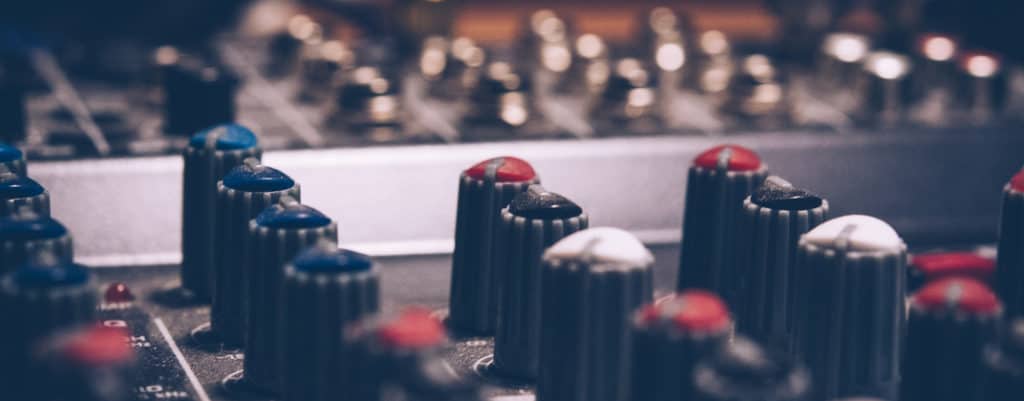
Active speakers have a built-in amplifier, while passive speakers need an external amplifier.
Active speakers are usually more expensive than passive speakers, but they’re also easier to set up and use.
Additionally, active speakers typically have better sound quality than passive speakers.
All the speakers on this list are powered, active speakers.
DJ speakers are designed to pump out a lot of bass and be loud. They’re not as accurate as studio monitors, but they’re more than adequate for mixing and mastering.
Studio monitors are designed for accuracy, so you can hear every detail in your track. This is essential for mixing and mastering, but it’s not as important for DJing.
So, if you’re looking for a set of speakers to practice mixing and mastering on, then studio monitors are the way to go. But if you’re looking for a set of speakers to DJ with, then DJ speakers will be more than adequate.
Home listening speakers are designed to make music sound “pleasing” and are often heavily bass-boosted. This can make it difficult to mix accurately on them.
Studio monitors, on the other hand, are designed to provide a flat response so that what you hear is accurate and true to the source material. This allows for more accurate mixing and mastering.
The frequency response is the range of frequencies that a speaker can reproduce. A wider frequency response means that the speaker can reproduce lower (bass) and higher (treble) frequencies accurately.
Some studio monitors are “full-range” which means they can reproduce the entire frequency spectrum (20 Hz – 20 kHz). Others are “bi-amped” which means they have separate amplifiers for the low and high frequencies.
The number of inputs and outputs on a studio monitor can be important, depending on how you plan to use it. If you only need to connect one source, then a single input is all you need.
However, if you plan on connecting multiple sources (e.g. a turntable, computer, and microphone), then you’ll need more than one input. The same goes for outputs. If you want to connect the monitors to a headphone amplifier or subwoofer, then you’ll need an output.
Remember, in order to for studio monitors to work, they need to be connected to an audio interface.
The most important and common inputs are:
- RCA
- TRS (1/4″)
- Headphone (1/8″)
- XLR (typical microphone cable)
If you’ve never seen studio monitors, they’re big. Really big.
Unless you’re going with the iLoud Micros, you’re going to need a lot of desk space (or invest in some monitor stands).
Weight is also something to keep in mind, especially if you plan on moving them around often.
Beginner studio monitors are a great way to get started in the world of home recording and mixing at a cheaper price point.
They provide clear and accurate sound reproduction, which is essential for getting good results.
Additionally, they come with multiple inputs and outputs, so you can connect them to a variety of different sources.
Yes, the size of the monitor speakers does matter. The larger the speaker, the more bass it can reproduce.
Generally, sound is produced by two speakers, the high-frequency driver (the tweeter) and the low-frequency driver (the woofer).
The size of these speakers is a huge factor in determining how accurately they can reproduce sound signal.
You can also choose to add an optional subwoofer, which produces deep, sub-bass frequencies (the kind you feel in your chest).
Keep in mind that the size of the room you’re using the monitors in will also affect the sound.
If you’re in a small room or apartment, you probably don’t need a massive speaker.
It’s best to experiment with different sizes to see what sounds best in your studio.
A subwoofer is not essential for studio monitoring, but it can be helpful in certain situations.
If you’re working on music with a lot of bass, then a subwoofer can give you a better idea of how the track will sound in a club setting. Additionally, if you’re in a small room, then a subwoofer can help to fill it out and make it sound bigger.
However, if you’re just starting out, then you probably don’t need a subwoofer. You can always add one later on if you find that you need it.
In addition to the monitors themselves, you’ll also need a set of speaker stands. These will elevate the monitors and help to improve the sound quality.
If you have space, you can place the monitors on your desk.
You might also want to consider getting a set of isolation pads. These go under the monitors and help to reduce vibrations.
And finally, if the monitor package doesn’t come with them, you’ll need cables.
This may be controversial, but I don’t think you need studio monitors to be a successful home studio musician or producer.
I think it’s possible to mix accurately on the right headphones as long as you’re using reference tracks.
However, using studio monitors in your mixing process will only make you a better producer and mixer, and give you more options for production.
Finneas uses the Yamaha HS5 studio monitors.
According to a few reports, Kanye uses the
Genelec 1031A Two-Way Active Speaker Studio Monitors.
Conclusion
A solid pair of studio monitors will definitely give you an edge in your producing, mixing, and mastering workflows. I hope this post has helped you find the best studio monitors in 2023.
Keep in mind that the size of your room and the acoustic treatment of your room will directly affect how your studio monitors sound.
A poorly-treated room will make even the best monitors sound terrible. So, if you can, try to treat your room with acoustic panels or bass traps (or just fill it with books!).
For more tips on music production, composition, music theory, and more, subscribe to the blog by opting into the form below, or check out my gear list for my personal favorites for musical production.

